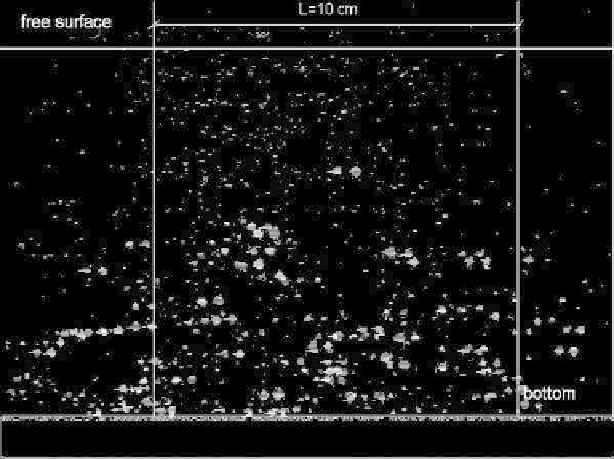Geoscience Reference
In-Depth Information
Fig. 6 Double exposure image with sediment and seeding particles (seeding diameter
¼
40
micron; sediment diamenter
¼
0.0680 mm)
technique is more suitable, discriminating in the processing stage between the two
phases. In fact, since the size difference between sediment and seeding particles is
usually considerable (Fig.
6
), a size-based criterion can be adopted (Muste et al.
1998
; Di Cristo and Muste
2002
).
3.2 Large-Scale PIV
The information provided by imaging techniques is limited to their field of
view, which in case of standard PIV system is up to several square centimeters.
Starting from the nineties, image velocimetry concepts have been applied for
documenting the free surface velocity field in laboratory flows, using imaged
areas up to several square meters (Lloyd et al.
1995
; Ettema et al.
1997
;Muller
et al.
2002
). Moreover, Fuijta et al. (
1998
) adapted conventional image analysis
technique for measurements in large body of water, with field of view hundreds
square meters large. This kind of imaging technique application was named
Large-Scale PIV (LSPIV).
LSPIV is now a suitable nonintrusive technique to measure instantaneous free
surface velocity field in an entire physical model or in rivers. Then, from the
measured velocity instantaneous values, temporal means can be computed. The
general layout of a LSPIV system is reported in Fig.
7
. While the LSPIV image

